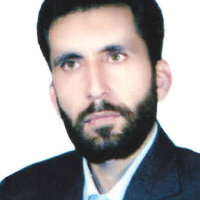Fertility evaluation of land for maize cultivation using GIS, fuzzy logic and ANP (Case study: four basins of Golestan province)
One of the most important factors in the production of high yield of plants is the presence of soil nutrient elements. Therefore, the accurate study of the amount of available elements such as macronutrients and micronutrients in soil is essential for the production of important products such as maize. For this purpose, preparing the soil fertility map of four basins agricultural in Golestan province was examined by Geographical Information System (GIS), Fuzzy logic and Analytic Network Process (ANP) for maize cultivation.
This research was carried out in four basins of Qaresoo, Qarnabad, Mohammadabad and Zaringol in Golestan province. The information of 858 sampled points were used for the preparation of soil elements layers including K and P available, total N, Ca, Mg, Fe, Zn, Cu and Mn available of the soil. First, the raster layer of each element was prepared in ArcGIS10.4 media by ordinary Kriging method in the agricultural lands of the study area. Then, with the help of fuzzy functions, each fuzzy standardization element map was prepared, the maps for each element were weighed using ANP and the soil fertility map was prepared by the layers' overlay the soil fertility map was prepared. In order to adapt the layers produced with the nutritional needs of maize, nutritional requirements of this plant were determined using the scientific resources. Finally, the final layer was divided into five categories of very high fertility, high, moderate, low and very low.
The results showed, the fuzzy value of the agricultural land in the study area was between 0.30 and 0.78. 119771.47 ha, equivalent to 59.87% of the studied area, had a moderate fertility that was more in the middle part of the study area and 80212.65 ha, equivalent to 40.9% had low fertility that was more in the north and south. 84.24 ha, equivalent to 0.04 percent had high fertility and two categories of very low fertility and very high fertility had no share of the study area. Among the basins, Zaringol basin had the highest fertility and the Mohammadabad basin had the lowest fertility. The mean fuzzy value showed, the elements of Mn and K had the highest fuzzy value and the elements of Ca and Zn had the lowest fuzzy value, respectively. The elements of K, P, N, Ca, Mg, Fe, Zn, Cu and Mn reduced the fertility value of the studied lands' area 69.38, 76.02, 96.98, 94.68, 47.81, 49.10, 96.98, 69.57 and 30.28%, respectively.
The results of the fertility zoning of the four studied basins with the help of fuzzy logic and ANP for maize cultivation showed, almost the entire study area (with the exception of 84.24 ha) faced with problems in terms of fertility. Zaringol basin was the most fertile basin for corn cultivation and Qaresoo, Qarnabad and Mohammadabad basins were in the next rank of fertility, respectively.
maize , Fertility , Fuzzy Logic , GIS , ANP
- حق عضویت دریافتی صرف حمایت از نشریات عضو و نگهداری، تکمیل و توسعه مگیران میشود.
- پرداخت حق اشتراک و دانلود مقالات اجازه بازنشر آن در سایر رسانههای چاپی و دیجیتال را به کاربر نمیدهد.


